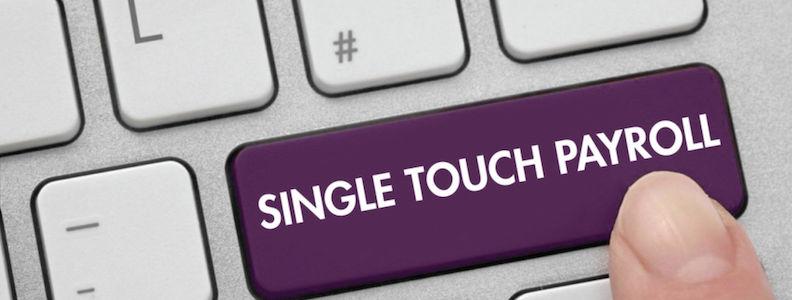
From 1 July 2019, single touch payroll (STP) will change the way businesses report salary/wages, PAYG and superannuation information to the tax office.
Single Touch Payroll (STP) is the direct reporting of salary/ wage, tax and superannuation information to the ATO at the time of payment.
Employers with 20 or more employees have been required to use STP since 1 July 2018, and it will be applied to businesses with 19 or fewer employees from 1 July 2019.
Why has STP been introduced?
STP streamlines the payroll reporting for business by using digitally submitted STP reports after each pay day instead of annual payment reports and employee payment summaries at the end of the financial year.
STP will also help the ATO to target the “black economy” where businesses pay employees in cash, and to identify businesses that don’t pay that don’t pay superannuation or Pay-As-You-Go (PAYG) tax instalments on behalf of employees.
Underpayment or non-payment of superannuation is a big issue. In addition to the transparency of STP, new laws will enable the ATO to advise employees (or former employees) of their employer’s poor superannuation payment and reporting history.
What is changing?
Businesses previously finalised their payroll records at the end of each financial year. This meant preparing an annual payment summary report for the ATO listing the salary or wages paid, the PAYG withheld, and superannuation contributions made on behalf of employees throughout the year.
Businesses also prepared employee payment summaries listing their wages, PAYG tax deductions, and superannuation contributions made on their behalf during the year.
With the implementation of STP, the ATO will use STP reports as the business’ record of wages, tax and superannuation contributions.
In addition, superannuation funds will report to the ATO when you make the payments to your employees’ super fund, providing the ATO with full visibility of your super obligations and payments.
Employees will be able to see the information that would normally be on their payment summary via their myGov login.
What do you need to do?
If you’re a small business with 19 or fewer employees and haven’t yet started using STP, you’ll need to ensure your business is STP-ready.
The ATO has prepared a Get Ready Checklist to help small businesses prepare for STP. This includes:
- Determining how you will report STP, either directly through your payroll system or getting your registered tax agent or BAS agent to report STP on your behalf;
- Ensuring your payroll software is STP-compliant, which may involve upgrading your software or implementing a new STP-compliant payroll system;
- Reviewing your current payroll processes and data, such as employee names, addresses, dates-of-birth, tax file numbers and superannuation information;
- Ensuring you have internal authorisations in place to report, including authorising relevant employees to interact with the ATO about STP matters;
- Identifying how your software sends your STP files to the ATO, and whether you need to obtain a secure AUSkey login to use the ATO Business Portal.
- Talking to your staff – although STP doesn’t affect how they’re paid, they will need to set up a myGov account to access their year-to-date payment summaries, as well as their superannuation and tax information.
What Isn’t Changing?
- There is no change to how frequently businesses are required to make payments to the ATO;
- The introduction of STP does not remove the obligation to lodge an IAS or report the withholding amount on the BAS quarterly.
While the start date for small employers is 1 July 2019, the Commissioner of Taxation has stated that small employers can actually start reporting through single touch payroll any time from 1 July 2019 until 30 September 2019, and that no penalties will be applied to mistakes, missed or late reports for the first year.
The ATO also states that to assist micro employers there will be, “a number of alternate options that are not available to employers with 20 or more employees – such as initially allowing your registered tax or BAS agent to report quarterly, rather than each time you run your payroll.”
Deductibility of Non-Compliant Payments
From 1 July 2019, there’s a new rule in place regarding the deductibility of non-compliant payments.
Businesses can only claim deductions for payments made to workers (employees or contractors) where you have complied with the PAYG withholding and reporting obligations for that payment.
If the PAYG withholding rules require you to withhold an amount from a worker’s payment, you must:
- withhold the amount from the payment before you pay it; and
- report the amount to the ATO.
Any payments you make where you haven’t withheld or reported the PAYG tax are non-compliant payments. You won’t be able to claim a deduction if you don’t withhold any PAYG tax or report the PAYG tax to the ATO.
If you make a mistake and withhold or report an incorrect amount, you will need to submit a form to notify the ATO so that you can regain access to the deduction.
If STP has been the last item on your priority list, you need to act now to ensure you’re ready to report through STP and comply with the obligations to claim deductions.
If you need assistance to get your business STP-ready, call BridgePoint Group on 1300 656 141.



